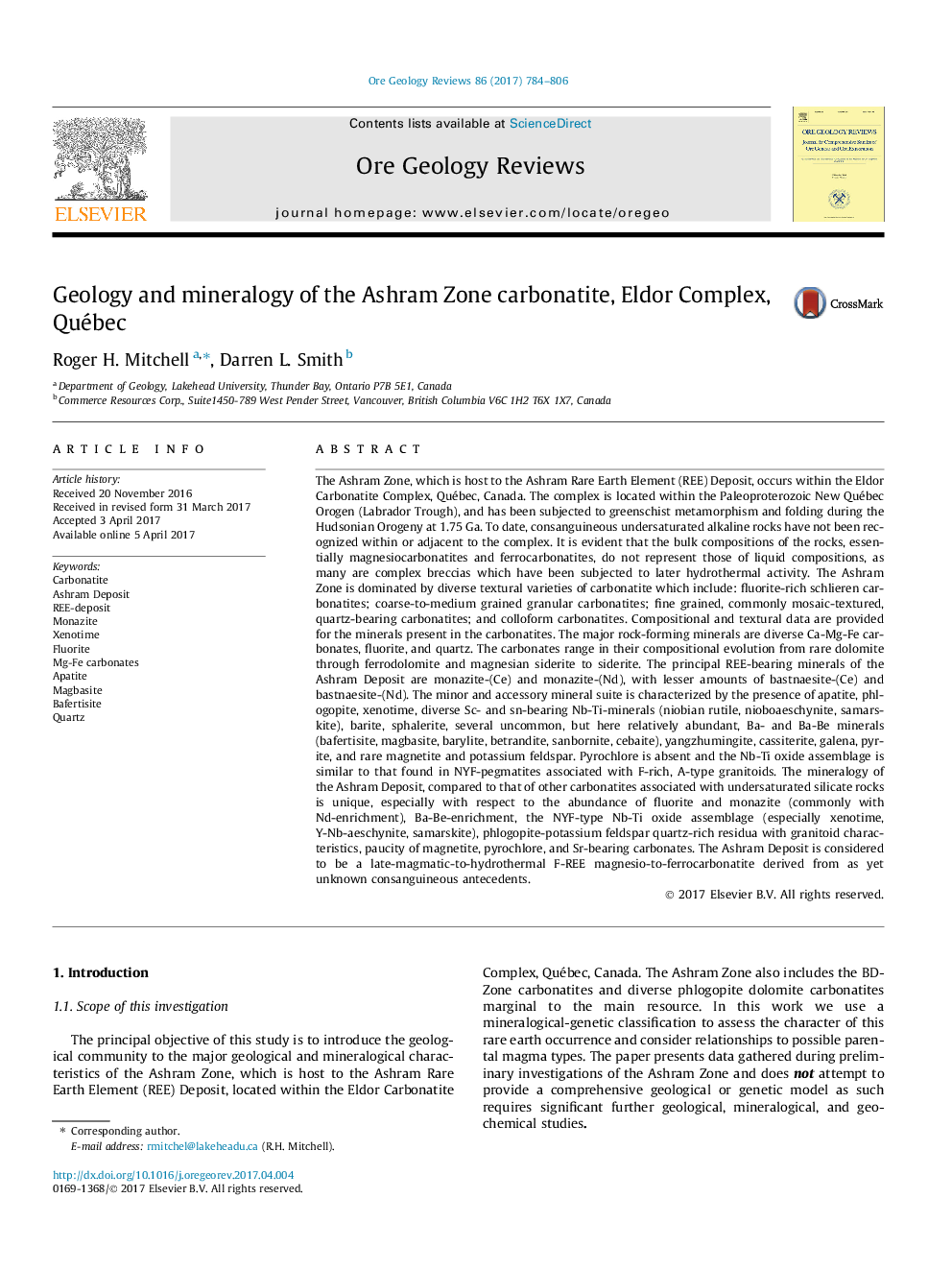| Article ID | Journal | Published Year | Pages | File Type |
|---|---|---|---|---|
| 5782428 | Ore Geology Reviews | 2017 | 23 Pages |
â¢First description of the Ashram Rare Earth Element Deposit.â¢Quantitative compositional data for major, minor and accessory minerals.â¢Conclusion that this ore deposit is not related to undersaturated alkaline magmatism.
The Ashram Zone, which is host to the Ashram Rare Earth Element (REE) Deposit, occurs within the Eldor Carbonatite Complex, Québec, Canada. The complex is located within the Paleoproterozoic New Québec Orogen (Labrador Trough), and has been subjected to greenschist metamorphism and folding during the Hudsonian Orogeny at 1.75Â Ga. To date, consanguineous undersaturated alkaline rocks have not been recognized within or adjacent to the complex. It is evident that the bulk compositions of the rocks, essentially magnesiocarbonatites and ferrocarbonatites, do not represent those of liquid compositions, as many are complex breccias which have been subjected to later hydrothermal activity. The Ashram Zone is dominated by diverse textural varieties of carbonatite which include: fluorite-rich schlieren carbonatites; coarse-to-medium grained granular carbonatites; fine grained, commonly mosaic-textured, quartz-bearing carbonatites; and colloform carbonatites. Compositional and textural data are provided for the minerals present in the carbonatites. The major rock-forming minerals are diverse Ca-Mg-Fe carbonates, fluorite, and quartz. The carbonates range in their compositional evolution from rare dolomite through ferrodolomite and magnesian siderite to siderite. The principal REE-bearing minerals of the Ashram Deposit are monazite-(Ce) and monazite-(Nd), with lesser amounts of bastnaesite-(Ce) and bastnaesite-(Nd). The minor and accessory mineral suite is characterized by the presence of apatite, phlogopite, xenotime, diverse Sc- and sn-bearing Nb-Ti-minerals (niobian rutile, nioboaeschynite, samarskite), barite, sphalerite, several uncommon, but here relatively abundant, Ba- and Ba-Be minerals (bafertisite, magbasite, barylite, betrandite, sanbornite, cebaite), yangzhumingite, cassiterite, galena, pyrite, and rare magnetite and potassium feldspar. Pyrochlore is absent and the Nb-Ti oxide assemblage is similar to that found in NYF-pegmatites associated with F-rich, A-type granitoids. The mineralogy of the Ashram Deposit, compared to that of other carbonatites associated with undersaturated silicate rocks is unique, especially with respect to the abundance of fluorite and monazite (commonly with Nd-enrichment), Ba-Be-enrichment, the NYF-type Nb-Ti oxide assemblage (especially xenotime, Y-Nb-aeschynite, samarskite), phlogopite-potassium feldspar quartz-rich residua with granitoid characteristics, paucity of magnetite, pyrochlore, and Sr-bearing carbonates. The Ashram Deposit is considered to be a late-magmatic-to-hydrothermal F-REE magnesio-to-ferrocarbonatite derived from as yet unknown consanguineous antecedents.
Graphical abstractDownload high-res image (164KB)Download full-size image
